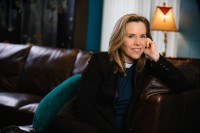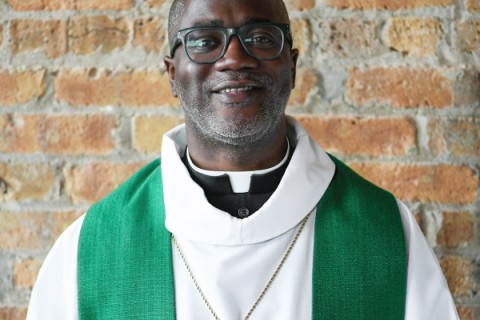Portraits of the poor
Surviving in a Material World. By Ronald Paul Hill. University of Notre Dame Press, 175 pp., $22.95.
Life at the Bottom: The Worldview That Makes the Underclass. By Theodore Dalrymple. Ivan R. Dee, 263 pp., $27.50.
Ronald Hill and Theodore Dalrymple both try to bring us into the world of the poor. Both strive to take armchair economists for an imaginary walk through the minds of the underclass, telling us in a series of provocative essays just how poor people think about their lives. Yet once we get out of our armchairs and go on their tours, we see that the authors are describing radically different worlds.
Hill states that each chapter of his book is a composite portrait of a person in poverty, based upon his own research during his years as a professor of social responsibility at the University of Portland. His vignettes introduce us to homeless Jack and to Anita the welfare mother with the intent of pointing us to larger themes.
"My primary goal in writing this book has been to make the material lives of the poor accessible to a wide audience of students, researchers, professionals and other interested parties, regardless of educational field or background," Hill says. "A secondary purpose of this book is to help rid society of the common stereotypes that exist about nearly all the subpopulations." Hill's academic style makes his well-meaning book a less than compelling read.
Dalrymple's writing, on the other hand, jumps off the page with vivid and cutting descriptions. Dalrymple is not an academic or social scientist, but a working physician and psychiatrist who lives in Birmingham, England. The time he spends with the poor in hospitals and prisons is the grist for his writings in the London Spectator and Daily Telegraph and the City Journal columns he has milled into this book. His gift for storytelling will keep readers turning pages--even those put off by his neoconservative point of view.
Unlike Hill, Dalrymple does not see the poor as good people caught in an unfair system, but as people who have been infected by the cultural relativism of the social elites. As a doctor who spends much of his time treating the injuries of women at the hands of the men they love, Dalrymple ponders why both the women and their abusing men slip so easily into the role of victim. The men who beat and even murder their women do not take moral responsibility for what they have done. Rather, they describe the act of murder with such passive phrases as "the knife went in."
"Certainly they are in squalor--a far more accurate description of their condition than poverty--despite a threefold increase in per capita income," Dalrymple states, noting that the expansive British welfare state has eliminated neither poverty nor suffering. But though he may be a conservative on social policies, Dalrymple, the son of a socialist, takes a populist's aim at snobs and hypocrites. "The British have a curious attitude toward wealth: they desire it for themselves but wish to deny it to others. And so, not surprisingly, there are very few methods of acquiring wealth of which they approve. Among them is gambling. . . . The National Lottery is both a form of gambling and a true tax, by means of which the poor pay for the pleasures of the rich. A committee awards the profits to orchestras, art galleries, dance companies--even to a theater group composed of radical ex-feminist prisoners."
Dalrymple's argument is not subtle. He believes that the sense of entitlement of an educated liberal elite has trickled down to the criminals he treats. He veers into such topics as why people tattoo themselves out of the normal job market, why young people love dance clubs, and why the litter in poor neighborhoods is full of junk food wrappers and prepackaged microwaveable meals, often eaten in front of the television, while the Indian families in the same poor neighborhoods eat fresh food, sitting at a table together.
One of the few groups spared Dalrymple's witty scalpel is immigrants, whom he sees as still embodying the values of hard work and responsibility. His medical colleagues from other countries at first are enamored with the English system in which people receive treatment that extends beyond the merely medical, and "there seems to be a public agency to deal with every conceivable problem. . . . Before very long, though, they start to feel a vague unease. A Filipina doctor, for example, asked me why so few people seemed grateful for what we had done for them."
Dalrymple goes on to describe the behavior of an irate and demanding man who had just been saved from an overdose. "There was no acknowledgment of what had been done for him, let alone gratitude for it. If he considered that he had received any benefit from his stay, well, it was simply his due. . . . My doctors from Bombay, Madras or Manila observe this kind of conduct open-mouthed. . . . When every benefit received is a right, there is no place for good manners, let alone gratitude."
Hill offers a kinder portrait of the poor. He presents a gallery of earnest people who, while they may make a few mistakes, are generally befuddled by a system that is hard on those without education or family support: "Anita agreed with the idea of limiting welfare, but she felt that her situation suggested she was truly needy. She had young children, an absent spouse, and poor job prospects. She wasn't wasting money on drugs or frivolous items, and she was supplementing her benefits through her own efforts. From her perspective, welfare was designed to help people just like her. Further, how did time limits make sense?" Spread throughout Hill's portraits are not-so-subtle hints as to how he envisions improving the system.
Hill offers a sympathetic description of the role of the church, from the local congregation where Anita finds community, hope and a pastor who preaches to the pain of single mothers, to the unknown volunteers who supply wrapped Christmas presents to the poor. Hill's descriptions of the poor and of the church are similar. Both church and poor are basically well meaning but capable of error and missteps in a system beyond their control.
Hill ends with a call for certain global rights, from a living wage, to basic goods and service, to the eschatologically confusing "right to a positive future." In a global economy of $25 trillion, he argues, these rights are not prohibitively expensive. "Nonetheless," he adds, "money alone will not be enough."
Dalrymple counters Hill's vision by saying that there will never be enough money to solve a problem that is essentially moral in nature. Interestingly, Dalrymple does not turn to the church for solutions. In one scene he conjectures about the architect of the now dying Anglican church across the street from his house. "He could not have imagined that, a century and a quarter later, the established church that had commissioned his splendid building would be on the verge of extinction. . . . Still less could he have imagined that members of the Synod of the Church of England would one day express more interest in Third World Indebtedness or Global Warming than in Sin." One wonders what, then, he would define as sin.






